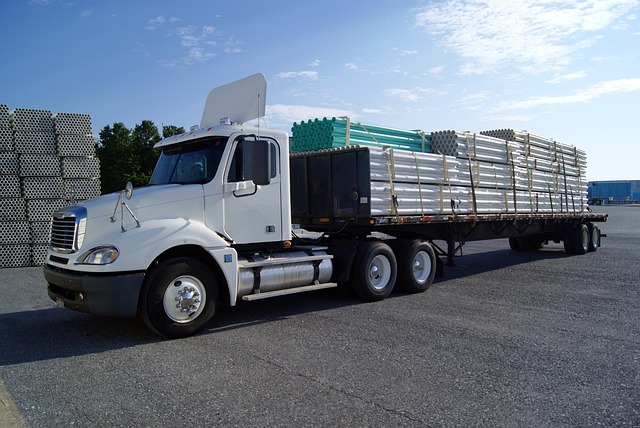Small businesses face diverse risks, from natural disasters to cyberattacks. Physical damage policies offer crucial protection against tangible hazards like fires and theft, helping maintain financial stability and market competitiveness. By strategically tailoring insurance coverage based on unique risk profiles, businesses can achieve a balanced approach that ensures adequate safety nets without excessive costs, supporting growth and resilience.
Small businesses face unique challenges when it comes to balancing affordability and comprehensive protection. This article explores how to navigate these complexities, focusing on understanding the risks that small business owners face and their impact on affordability. We delve into the crucial role of physical damage policies in risk mitigation and present strategies to achieve a balance between protection and cost efficiency. Additionally, we share compelling case studies demonstrating successful implementation of comprehensive coverage for small businesses, highlighting the importance of tailored insurance solutions.
Understanding Small Business Risks and Their Impact on Affordability

Small businesses face a unique set of risks that can significantly impact their financial health and sustainability. From natural disasters to cyberattacks, employee misconduct to legal issues, the potential for unforeseen events is vast. These risks often carry substantial financial implications, including property damage, liability claims, data breaches, and legal fees. Understanding these potential hazards is crucial in gauging the true cost of doing business.
When it comes to affordability, physical damage policies play a pivotal role. These policies offer comprehensive protection against tangible risks like fire, flood, theft, or vandalism, which can cause substantial financial losses. By assessing their unique risk profiles, small businesses can tailor their insurance coverage to ensure they’re not paying for excessive protections while still maintaining adequate safety nets. This balanced approach allows them to stay competitive in the market while safeguarding against potential pitfalls.
The Role of Physical Damage Policies in Risk Mitigation

Small businesses, with their fragile structures and diverse assets, are vulnerable to a range of risks, from natural disasters to accidental fires. Physical damage policies play a pivotal role in safeguarding these businesses by offering comprehensive protection against such unforeseen events. These policies act as a shield, covering the cost of repairing or replacing damaged property, inventory, and equipment.
By incorporating physical damage policies into their risk management strategies, small business owners can mitigate potential financial losses significantly. Such coverage ensures that operations can resume more swiftly after a disruptive incident, minimizing downtime and its associated costs. This proactive approach allows businesses to focus on growth and stability, knowing that their assets are shielded from the unpredictable nature of physical damages.
Strategies to Balance Protection and Cost Efficiency

Small businesses often find themselves caught between the need for comprehensive protection and the reality of tight budgets. Balancing affordability with robust coverage is a delicate act, but it’s achievable through strategic considerations. One key approach is to focus on policies that address specific risks prevalent in their operations, such as physical damage insurance. By customising their coverage, businesses can ensure they’re protected against potential losses from events like fires, theft, or natural disasters without overspending.
Moreover, understanding the value of assets and implementing risk mitigation strategies can significantly reduce costs. This might include simple measures like regular maintenance to prevent equipment failures, data backup solutions to avoid loss, or security systems to deter criminal activity. These proactive steps not only lower insurance premiums but also contribute to a resilient business model.
Case Studies: Successful Implementation of Comprehensive Coverage for Small Businesses

Many small businesses have successfully navigated the challenge of balancing affordability with comprehensive protection by implementing robust physical damage policies. Case in point, a local bakery in a bustling city center faced the dilemma of protecting its valuable equipment and inventory from potential fires and storms while keeping costs manageable. They achieved this by partnering with an insurance provider that offered tailored solutions, including specific coverage for kitchen appliances and stock loss due to weather events. This strategic approach not only ensured peace of mind but also enabled the bakery to continue operations uninterrupted during a major storm, demonstrating the tangible benefits of comprehensive coverage.
Similarly, a tech startup in a rapidly growing metropolis encountered issues with frequent equipment failures and data breaches. By enrolling in a physical damage policy that included cyber liability coverage, they could safeguard their sensitive data and critical hardware. This proactive measure not only mitigated potential financial losses but also instilled confidence among investors and customers alike. These examples highlight how customized physical damage policies can empower small businesses to thrive, ensuring they are shielded from unforeseen circumstances while adhering to budgetary constraints.
In navigating the delicate balance between affordability and comprehensive protection, small businesses can find solace in strategic risk management. By understanding unique business risks and leveraging essential tools like physical damage policies, entrepreneurs can safeguard their investments while maintaining financial viability. Implementing cost-efficient strategies and learning from successful case studies empowers small businesses to thrive with resilience against unforeseen challenges. Adopting a proactive approach to coverage ensures they remain competitive in today’s dynamic market.
